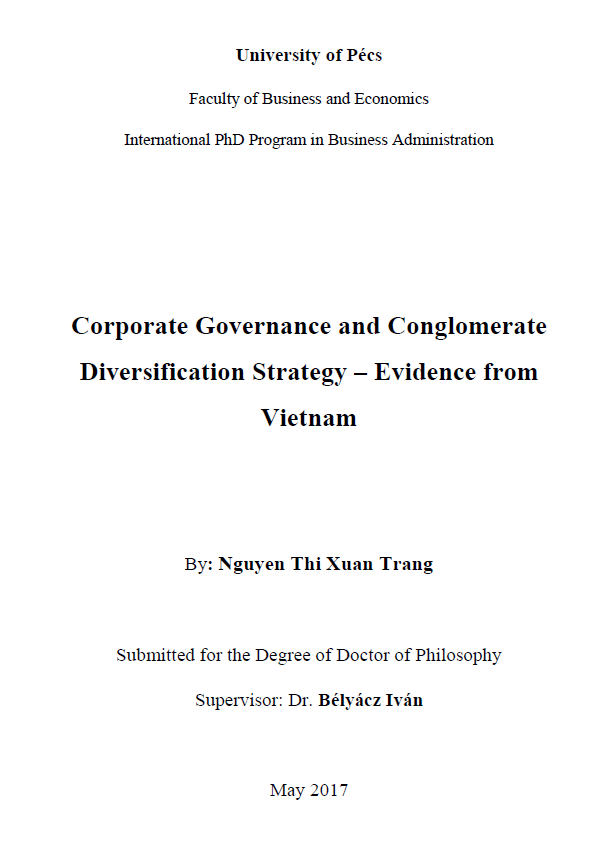Corporate Governance and Conglomerate Diversification Strategy – Evidence from Vietnam
Abstract
This research mainly examines the impacts of internal corporate governance mechanisms, including interest alignment devices and control devices, on the unrelated diversification level in Vietnam, a developing country in Asia and find out how agency theory can be used to explain the effects. Additionally, the moderation of free cash flow on these relationships and the effectiveness of diversification strategy to firm value in case of Vietnam are also tested. The study is based on a balanced panel data set of 70 listed companies in both stock markets, Ho Chi Minh Stock Exchange and Ha Noi Stock Exchange, in Vietnam in the years 2007 – 2014, which gives 560 observations in total.
The results showed that if the interest alignment device was increasing executive ownership for CEOs, the extent of diversification would be reduced. In the meanwhile, the link between unrelated diversification level and executive stock option, another interest alignment device, could not be confirmed. For three control devices (level of blockholder ownership, board composition, and separation of the position between a CEO and a board chairman), the study found a positive connection between blockholder ownership and diversification, and insignificant relations between Board composition or Duality in position and the conglomerate diversification level statistically. Interestingly, the agency theory could not be used to explain the relationship between corporate governance and diversification in case of Vietnam because there were no statistical evidences to assert the negative relationship between unrelated diversification level and firm value through Tobin’s q at 5% significant level. The main reason might be that from 2007 to 2014, the average diversification level for each listed firm in Vietnam was quite low, less than 0.2. Thus, diversifying into new industries that were rather different from the core industries could bring not only challenges but also opportunities for the firms in this country in the era of globalization. Additionally, this study discovered a negative link between State ownership and diversification and there was no difference on the effect of each internal corporate governance mechanism on diversification level of a firm between high and low free cash flow.
The research makes several invaluable contributions to the current literature on relationships among corporate governance, firm diversification, and value of diversified firms. Firstly, this research can be considered as a contribution to the related topic with an example of Vietnam, a developing country in Asia. Secondly, the research results continue to prove the fact that there is no unification in the results showing the relationships between corporate governance mechanisms and corporate diversification in literature. Thirdly, it seems to be the second research that follows the study of Castaner & Kavadis (2013) on the moderation of free cash flow to the effects of corporate governance on diversification. Moreover, it supports the argument that the agency theory is not always suitable to use in explaining the relations between corporate governance and diversification. Finally, the research makes a theoretical contribution to the topic of the effectiveness of conglomerate diversification strategy. It is suggested that it will be important for a firm to catch the maximum threshold of diversification level so that it can prevent counter-productive effects of the conglomerate diversification strategy.
In addition to invaluable contributions to the current literature on this topic, the research also can be a useful reference for not only investors, managers but also for policy makers in Vietnam. As far as the author knows, this study is the first one exploring the relations among corporate governance, diversification and firm value in Vietnam where the topics related to effectiveness of corporate governance mechanisms to public companies has been more and more attractive to researchers since the default of Vietnam Shipbuilding Industry Group (Vinashin) in 2010 happened and the Circular No. 121/2012/TT-BTC on 26th July, 2012 of Vietnamese Ministry of Finance was issued with regulations on corporate governance applicable to lists firms in this country.

